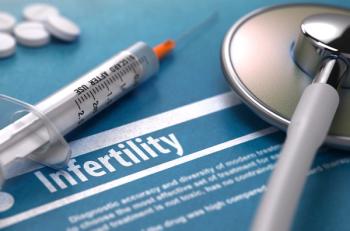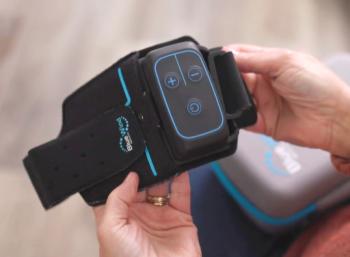
Diagnostic error – What physicians and hospitals can do to reduce risks for patients
Hospital watchdog group responds to study on patient deaths in ICU.
Whether in private practice or in hospital, physicians must be advocates for keeping patients safe from errors, injuries, accidents and infections, according to a national watchdog group that ranks hospitals for patient safety.
Patient safety was at the center of
Analyzing
The Leapfrog Group was not involved with that study. Jean-Luc Tilly, MPA, PMP, program manager for Leapfrog Group’s health care ratings, spoke to Medical Economics about the findings, the latest on patient safety, and how primary care physicians can help.
The following transcript was edited for length and clarity.
Medical Economics: What was most surprising to you about the study findings?
Jean-Luc Tilly, MPA, PMP: That the rate is high, the rate of misdiagnosis there, especially the rate that leads to harm, about 17% if I remember right. And that is much higher than the rate that has been identified in prior work. There's been some prior systematic reviews looking autopsy reports for folks who passed in the ICU, and they have found an error rate that sort of ranges between 4% to 7.5% for diagnostic errors that have led to harm. So, this is 17%, three times as high, that it is higher than the prior work. That said, the rates of diagnostic error there's a consensus in the field that I agree with, that they're undercounted to some extent. There's a lot of variation in the literature, I mean, even that rate 4 to 7.5%, a big difference there. And I think in this case of this study, the author's brought some real analytical rigor to their process. So, I think, unfortunately, it probably suggests that their figure, which I would call alarming, is probably pretty close to truth. And that's a high level of patient harm.
Medical Economics: The JAMA Internal Medicine study used a sample of 29 hospitals around the country. Is it reasonable to extrapolate from that pool that diagnostic errors are happening in other hospitals not included in the study sample?
Jean-Luc Tilly, MPA, PMP: Here's how I think about that. This study was conducted at academic medical centers, exclusively. So that's hospitals like Johns Hopkins Hospital, Massachusetts General, Mayo Clinic. These are all hospitals that have Leapfrog A safety grades, you know, the safest hospitals in the country, and they're, frankly, at least as well prepared as any hospital nationwide to take on a diagnostic challenge. Especially when we think about identifying the needed tests or considering a range of probable diagnoses. They see a lot of special cases. Those two dimensions of diagnosis, identifying the right testing concerning range of diagnosis mean, those were the greatest risk of error in this study. You know, my supposition is that hospitals that have less access to specialists or tests, delays in getting those tests, which is probably many hospitals across the country that aren't academic medical centers, they may have even higher incidences of these kinds of errors. That suggests that it's probably a higher national rate.
Medical Economics: What can a physician do to become intentional about advocating for patient safety in that hospital context?
Jean-Luc Tilly, MPA, PMP: There are a lot of really specific approaches that are you'd find in the hospital survey, but that apply to independent practice too. Medication reconciliation – medication errors are a leading cause of medical errors overall, and so being really intentional about giving out medications, doing a medication reconciliation with your patients, using the same kind of physician order entry system to check for errors and interactions. Hand hygiene is a huge concern in hospitals, a concern physician practices too. Obviously your typical physicians practice is naturally much less of a risk, but that's another area that I might prioritize. But I think too physicians that are practicing at a hospital can have a lot to contribute to the overall quality of care at that hospital. They can speak up when they see opportunities for improvement, they can report diagnostic errors, those are underreported. They would be doing a lot of good by reporting them and that helps the whole system learn from the opportunity. I think too clinicians and primary care physicians can do a lot to educate themselves about common diagnostic errors, sort of have them in the back of their mind. You know, the
Medical Economics: News releases about the JAMA Internal Medicine study included comments from the researchers about potentially integrating artificial intelligence into patient care and the diagnostic process. Can you explain Leapfrog Group's approach to using technology to increase patient safety?
Jean-Luc Tilly, MPA, PMP: Through our history, really, our first quality of measure was around computerized physician order entry. Leapfrog has been really supportive of hospitals, and anyone in health care really, adopting new technology to improve patient safety. I mentioned computerized physician order entry, but you know, barcode medication scanning, which prevents administering to the wrong drugs, electronic monitoring for hand hygiene, newer CT scanning machines that use much lower radiation doses. All of those are things that we've evaluated hospitals on their rate of adoption, because those are very effective and have a real demonstrable impact on patient safety. But that doesn't change the top priority for us, which is patient safety itself. We aren’t Luddites, but it'll take us some years yet to really set a clear standard on exactly what kinds of things coming out of the AI space are things that you want to evaluate hospitals on whether or not they're taking them up. That's not to say that it's not a great time to do new demonstration projects and things like that and find out what's working. But I think for the time being, we're not really ready to set a standard in this area.
Medical Economics: Our main audience is primary care physicians. What would you like to say to them, or what else would you like them to know?
Jean-Luc Tilly, MPA, PMP: The key thing for me really is primary care physicians, and I know a few pretty well, they have born a tremendous burden
I do think too, that physicians can do a lot to prepare their patients for going into the hospital. A lot of this maybe is familiar advice. I mean, speaking out when you’re unsafe, being proactive about your own care, double-checking things, but too, and this one I think is really critical, if you can you have a family member or friend with you to help advocate on your behalf. I think that can make really all the difference. One of the one of those (Leapfrog) 29 practices is around the escalation of care. Very often for very serious conditions when a patient's hospitalized, whether that's sepsis or hemorrhaging, maternity, it's the husband and his wife giving birth, it's the family member with their grandmother, who was the first to notice that deterioration in care and to minimize the time to escalate that care. We want hospitals to have a process in place to let patients and family caregivers have a clear-cut path to getting an evaluation for an escalation of care, but we want patients to realize and that with that family or friend on board, they'll have a safer care experience.
Newsletter
Stay informed and empowered with Medical Economics enewsletter, delivering expert insights, financial strategies, practice management tips and technology trends — tailored for today’s physicians.














